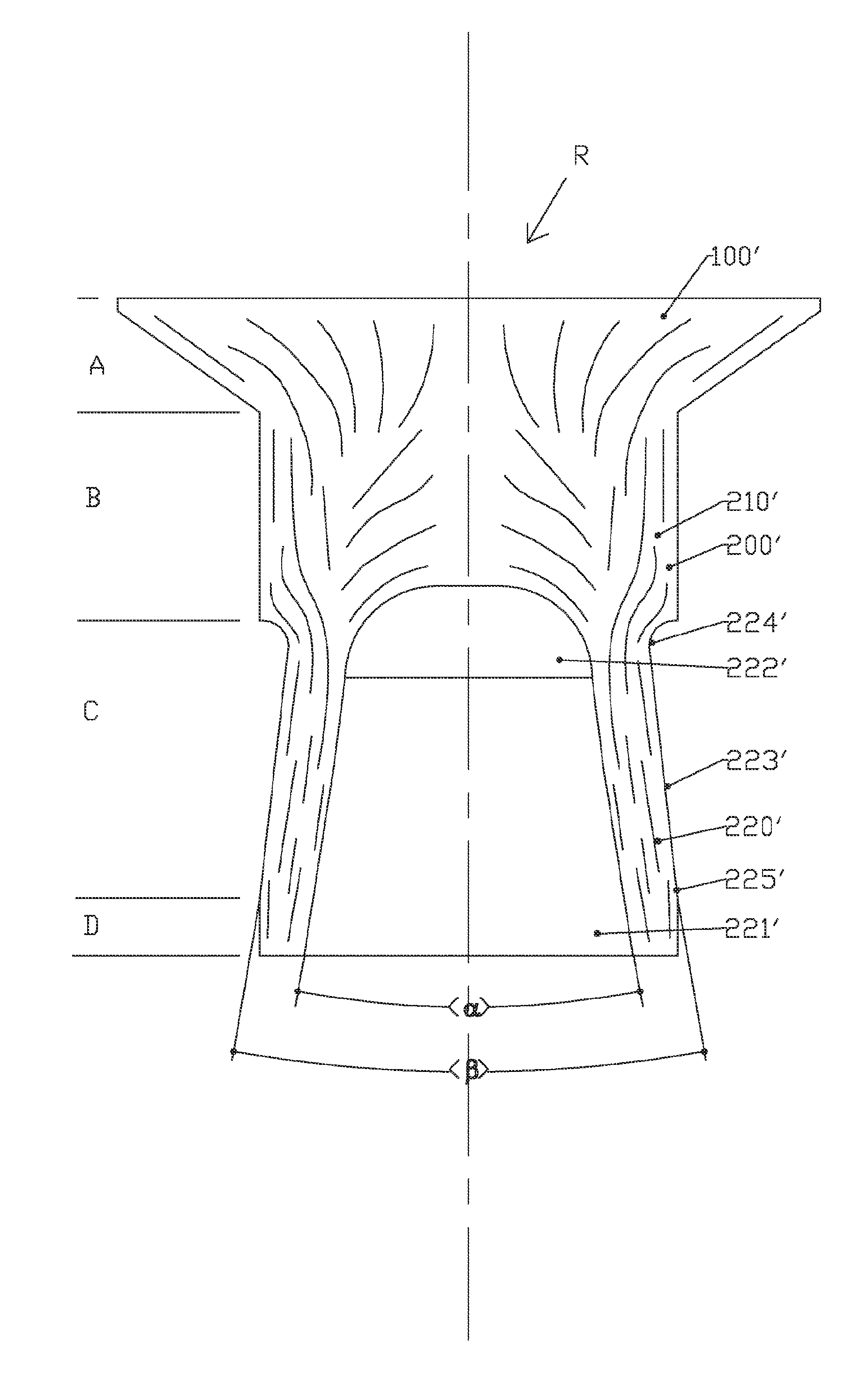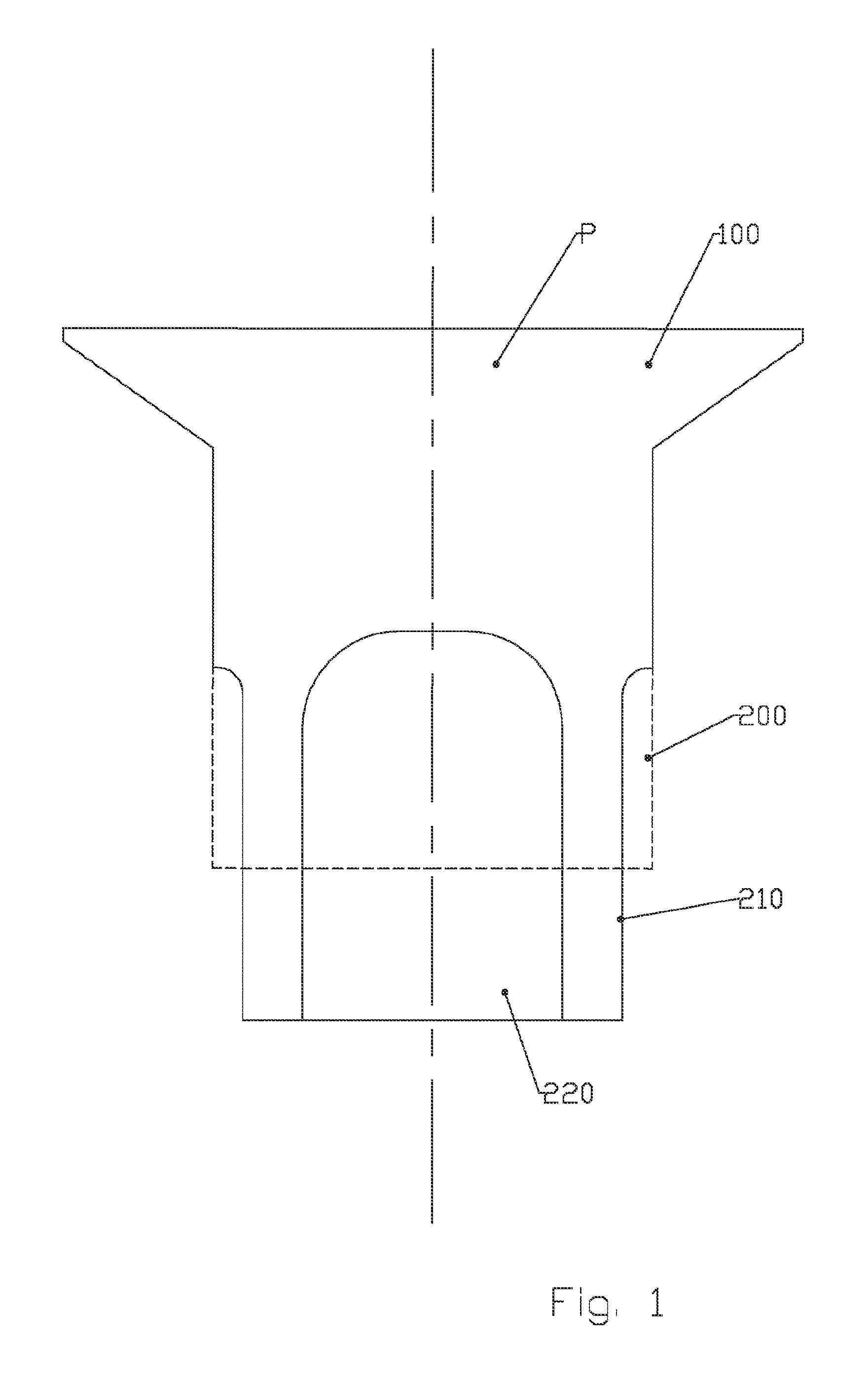Method for making a rivet and rivet obtained by said method
a technology of rivets and methods, applied in the field of rivets, can solve the problems of poor fatigue strength of rivets, increased cost of manufacturing rivets, and machining operations that increase the cost of rivet manufacturing,
- Summary
- Abstract
- Description
- Claims
- Application Information
AI Technical Summary
Benefits of technology
Problems solved by technology
Method used
Image
Examples
Embodiment Construction
[0007]In light of this fact, the applicants have carried out research aiming to reduce the cost of manufacturing these rivets while optimising the technical qualities.
[0008]This research has resulted in the designing of a method for manufacturing rivet that is particularly advantageous, resolving the problems of prior art.
[0009]This method for manufacturing a rivet is of the type of that comprising by deformation of the material of a substantial cylindrical metal section, the preformation operations of a countersunk head at the end of a rod and is remarkable in that it comprises the carrying out by deformation of the material (cold heading) the following operations:[0010]creation of a portion with less diameter starting at the free end,[0011]creation of a substantially cylindrical hollow core in order to form a tubular portion,[0012]preformation as a truncated cone of the hollow core,[0013]preformation as a truncated cone of the external surface of less diameter.
[0014]By proposing a...
PUM
| Property | Measurement | Unit |
|---|---|---|
| angle | aaaaa | aaaaa |
| angle | aaaaa | aaaaa |
| angle | aaaaa | aaaaa |
Abstract
Description
Claims
Application Information
 Login to View More
Login to View More - R&D
- Intellectual Property
- Life Sciences
- Materials
- Tech Scout
- Unparalleled Data Quality
- Higher Quality Content
- 60% Fewer Hallucinations
Browse by: Latest US Patents, China's latest patents, Technical Efficacy Thesaurus, Application Domain, Technology Topic, Popular Technical Reports.
© 2025 PatSnap. All rights reserved.Legal|Privacy policy|Modern Slavery Act Transparency Statement|Sitemap|About US| Contact US: help@patsnap.com



